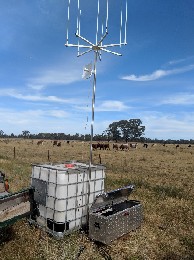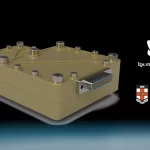Australia’s Department of Defence has awarded AUS$28 million (about $19 million U.S.) to a range of technology companies for cutting-edge concept exploration and technology demonstration. Four of the 15 awarded projects involve satellite technology, and one of them, given to GPSAT Systems Australia Pty Ltd, is to develop GPS jamming and spoofing countermeasures.
The Melbourne-based company has developed its GNSS Rf InterFerence FINder (GRIFFIN) technology over the better part of the last decade. The AUS$1.1 million ($750,000 U.S.) Defence contract is for three complete preliminary systems of GRIFFIN technology Phase III, with deliveries scheduled Q4 2019. “All the underlying research and development work was completed and successfully demonstrated/validated back in mid 2017 under an earlier defence contract,” said GPSAT Systems managing director Graeme Hooper.
The GRIFFIN family of products is designed to quickly detect and geo-locate regional interference sources, both jamming and spoofing, within the GNSS frequency bands. They target protection of small areas, a few square kilometers, such as regional airports. They are also scalable out to many hundreds of square kilometers for protecting larger aviation terminal approach flight paths. GRIFFIN technology delivers pinpoint geo-location accuracies of few meters for the smaller coverage areas, while increasing to tens of meters for the very long distances across the larger coverage areas, according to the company.
The GRIFFIN system consists of multiple sets of RF signal reception nodes, referred to as sensor nodes deployed surrounding the facilities to be protected. The sensor nodes are networked with one or more central nodes that coordinate and control the system.
The September/October issue of Inside GNSS will carry an in-depth technical article, “Exploiting Wideband Characteristics for GNSS Interference Geo-localization: Theory and Field Test,” detailing the technology.
Two GRIFFIN products are commercially available currently. The 1000 model is primarily designed for civilian GNSS users seeking protection for aviation airport GBAS/ADSB operations, marine harbor pilot DGPS systems, and/or critical suburban network communications/power grid timing applications. The multi-frequency, multi-constellation 2000 model provides wider spectrum protection for customers using GNSS for either security and/or precision RTK applications in industrial machine automation projects.
Minister for Defence Industry, the Hon Melissa Price MP, said the Defence Innovation Hub was investing around $640 million overall in developing innovative technologies, with these specific contracts going to Australian small businesses who are developing cutting-edge technologies aimed at providing Australian Defence forces with a capability edge.
“This tranche of investments includes initial concept exploration and technology demonstration, through to prototyping and integrated capability demonstration and evaluation,” Minister Price stated.






